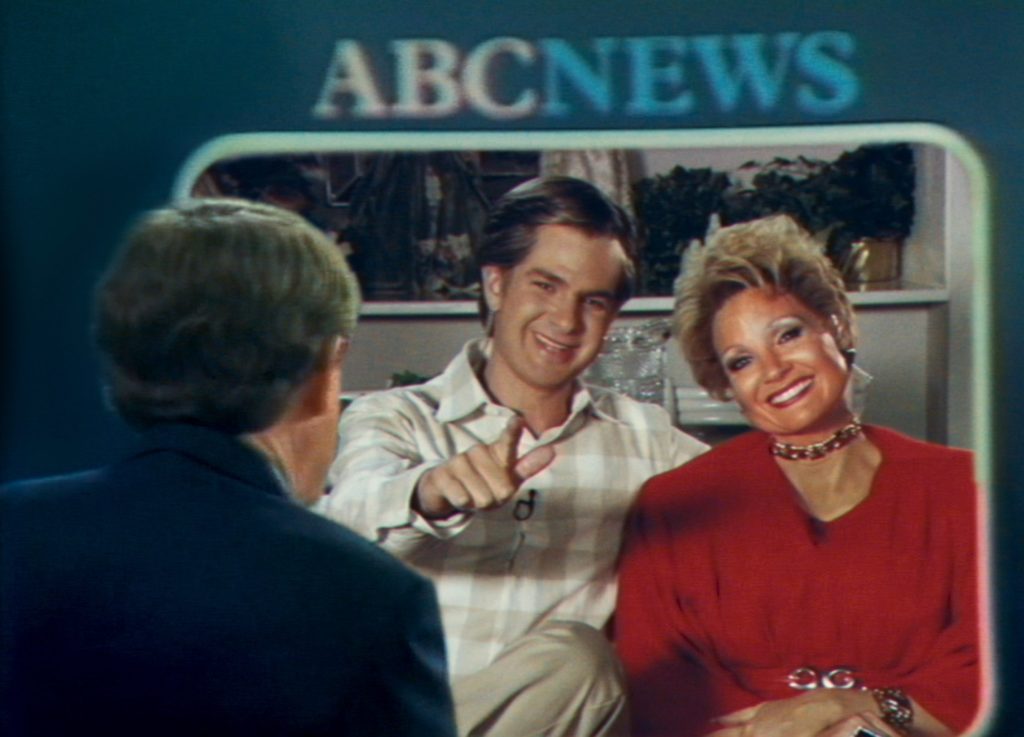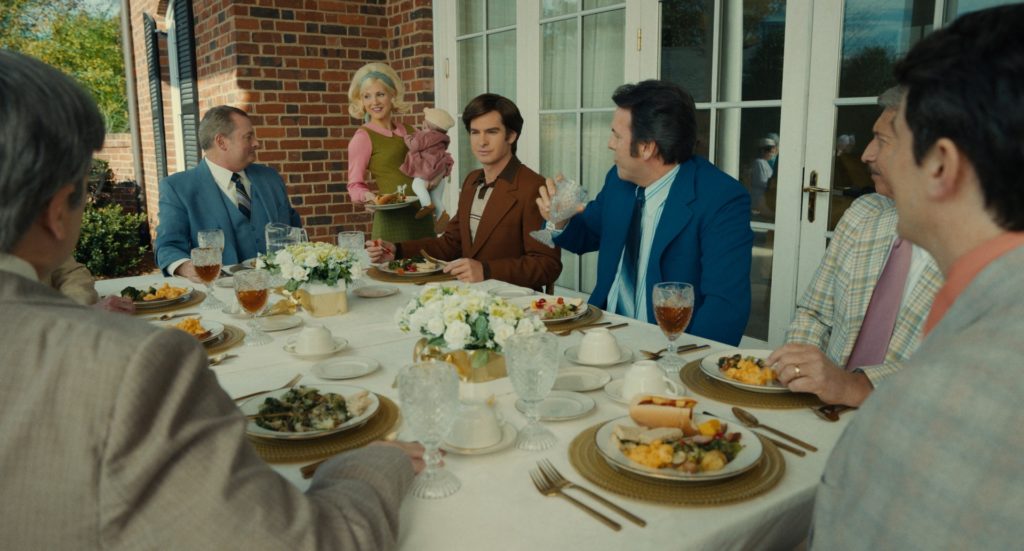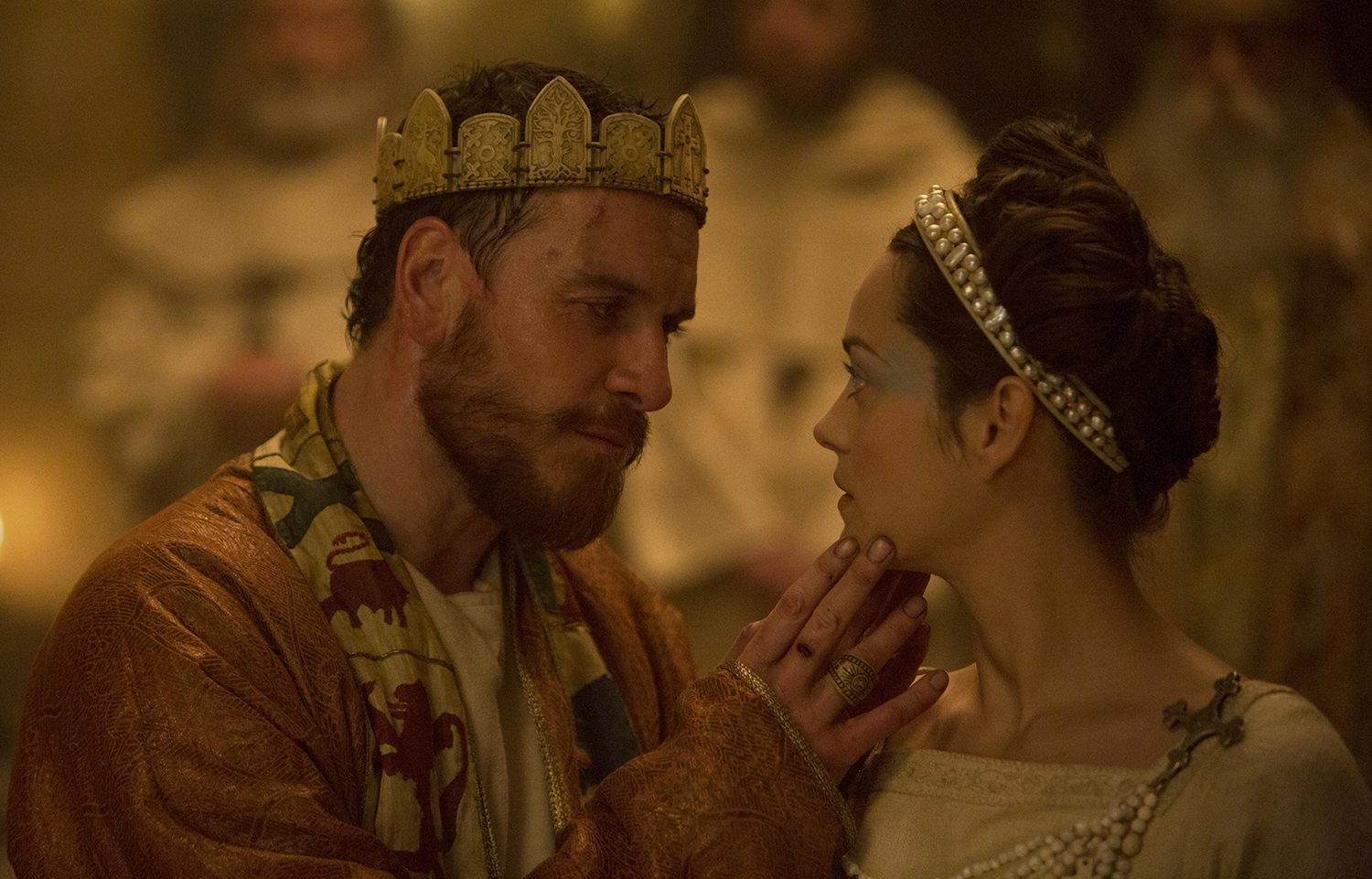For many people, Tammy Faye Bakker is probably best known for being the butt of jokes and SNL skits. Her outlandish makeup was a trademark that was easy to satirize, as was her singing and onscreen demeanor. But what of the person behind all that? The Eyes of Tammy Faye, directed by Michael Showalter, gives us a very sympathetic look at this woman who was an icon to televangelism, and who also became a champion of LGBTQ rights. The film is based on an excellent documentary by the same name from 2000 directed by Fenton Bailey and Randy Barbato. Screenwriter Abe Sylvia has done a masterful job of expanding and transforming that documentary into a narrative film. (Although, there are some small bits of dramatic license, but nothing that really does harm to the story.)
The film follows Tammy Faye?s life from a child in International Falls, Minnesota, where she was somewhat discouraged from going to church because her mother had divorced and remarried. But Tammy Faye (Jessica Chastain) was so attracted to the church that she went anyway, and when she spoke in tongues, she was readily accepted. When at Bible college, she met and fell in love with Jim Bakker (Andrew Garfield), who even then was proclaiming the prosperity gospel. They soon married and set out on the road as traveling evangelists.

When their travels took them to the area of the fledgling televangelist Pat Robertson, Jim and Tammy Faye started doing a kid?s show for him, which Jim leveraged into ?The 700 Club?, the first Christian talk show. Soon, Robertson wanted that show for himself, so Jim and Tammy Faye started their own televangelist network (PTL) which grew rapidly. The vision was always far ahead of resources, and debt was a constant problem, especially after building a theme park that rivaled Disneyland. Through it all the couple lived a luxurious life. In time, Jim Bakker was eventually charged with and convicted of fraud and sent to prison.
While the documentary covered all this history with archival footage, this film takes us behind the curtain to see all this taking place through Tammy Faye?s perspective. And that allows us to see a multi-faceted person who has more to her than we may suspect.
The film opens with a scene (reenacted from the doc) of Tammy Faye at a TV studio having her makeup removed so that more camera-friendly makeup can be put on. While the makeup comes off, she talks about all her makeup. We then discover that some of it is permanent. Tammy Faye concludes, ?Yeah, this is who I am.? We are struck by how the real and the persona are blended in such a way that it?s hard to separate one from the other. As the film progresses, we see Tammy Faye as someone who is blended in many ways.

One of those ways is how she seems to be in a constant tension between her stolid Midwestern upbringing (personified in her mother, played by Cherry Jones) and the lavish lifestyle that surrounds her. Certainly, Jim?s messages of prosperity as a sign of faith gives some spiritual cover for that (even if a dubious theology). Even though she?s very comfortable with all the luxury, there is always her mother?s disapproval of it.
The film also makes a point that Tammy Faye was more than just Jim?s wife. (That is truer here than in the documentary.) To be sure, much of her life, its rises and falls, were caused by Jim and his dreams (and lack of solid morals), but there were ways that Tammy Faye had her own sense of power and her own desires. A key illustration is a scene in which Jim, Robertson, and Jerry Falwell are all sitting down at a barbecue to talk business. The women are all left on the periphery. That is, until Tammy Faye, baby in arms, pulls her own chair up to the table to insert herself into the discussion.

It should be noted that Chastain is one of the producers of the film as well as the star. When she first saw the documentary, she was moved to make it into a film and bought the rights. There is a certain ?Time?s Up? feeling to that place-at-the-table scene. This view of Tammy Faye as one pushing for women?s rights adds another layer to her persona in the film.
Later, Tammy Faye became the first leader among Evangelicals to show great compassion to AIDS sufferers, which led her to be compassionate toward LGBTQ people in general. She understood them to be beloved of God. She may or may not have approved of their lives, but she saw them first and foremost as God?s children. This at a time when many of the other televangelist were referring to AIDS as a plague sent from God to punish gays.

After watching this film, I watched the documentary for comparison. While there are some differences in how the stories are told, the films together serve to give a fuller picture of the events and of Tammy Faye. The impression I had of Tammy Faye after watching both films was that the best description of her is ?simple?. (By that I mean uncomplicated, not mentally deficient.) The picture this film gives us of Tammy Faye is a woman who is guileless. In spite of her garish makeup, with Tammy Faye, what you see is what you get.

That simplicity applies to her gospel message as well. The ?Gospel according to Tammy Faye? is ?God loves you. He really does.? As one trained in theology, I know that there are volumes written to describe the Gospel and the many nuances that grow out of God?s relationship to the world. Back when the Bakkers were riding the wave of televangelism, I would have likely belittled them for many valid reasons. But I also can say that that simple statement of God?s love is truly a full statement of the Gospel.
The Eyes of Tammy Faye opens in theaters September 17.




